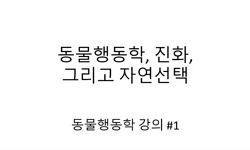According to time and places to see animals even if they are same, the fortune telling point of view concerned with animals is totally different. For instance, the spider is considered as symbols of fortune and anxiety according to time to see it. The...
http://chineseinput.net/에서 pinyin(병음)방식으로 중국어를 변환할 수 있습니다.
변환된 중국어를 복사하여 사용하시면 됩니다.
- 中文 을 입력하시려면 zhongwen을 입력하시고 space를누르시면됩니다.
- 北京 을 입력하시려면 beijing을 입력하시고 space를 누르시면 됩니다.
https://www.riss.kr/link?id=T8547028
- 저자
-
발행사항
[서울] : 中央大學校 大學院, 2001
-
학위논문사항
학위논문(박사)-- 中央大學校 大學院 國語國文學科 : 古典文學 2001
-
발행연도
2001
-
작성언어
한국어
- 주제어
-
KDC
810 판사항(5)
-
발행국(도시)
대한민국
-
형태사항
vii, 327 p. : 삽도 ; 26 cm.
-
일반주기명
본서 (등록번호:00315066)는 이종철 총장(2006.07.19) 기증도서임
참고문헌: p.310-316 - DOI식별코드
- 소장기관
-
0
상세조회 -
0
다운로드
부가정보
다국어 초록 (Multilingual Abstract)
According to time and places to see animals even if they are same, the fortune telling point of view concerned with animals is totally different. For instance, the spider is considered as symbols of fortune and anxiety according to time to see it. There is mention of fortune telling on the spider: "The spider seen in the morning stands for fortune while the spider appeared in the evening symbolizes cares." If people saw it in the morning, they thought that it brought fortune, so they didn't kill it while if seen in the evening, they never saw it without putting their feet on it. Merchants don't want to have dreams on deer which was admired in a poem but is considered as a unlucky animal to them. Dreams are an important part of Koreans' belief system. Like this, animals can be distinctively understood even in the same cultural area according to time, places, and people's points of view.
From the prehistoric age, people used animal symbols representing a certain meaning to demonstrate a variety of living culture, religion, and thought of the time. Many animal images were shown in drawings incised on rocks and cave paintings as well as mural paintings in the graves, clay dolls, and pottery. These animal symbols are reflected in people's conscious world of those days and depict a part of living culture. Korean ancestors embossed the symbolic and suggestive meanings manifested in the outward figure and behavior of animals. Most animal figures appeared in ancient relics and sites can't be wholly interpreted. Cultural and ideological backgrounds of the time should be first understood and their contexts studied to understand the animal symbols precisely appeared in Korean culture.
The folklore related to animals approves their spiritual power and represents the relations between human and nature and the understanding and interpretation of many-sided human life. Relics decorated with animal figures reflect the conscious world of ancient people and include a part of living culture. Research on the folklore as to animals can be started from this point of time. The approach on the folklore with regard to animals should be first interpreted via the study on animal themselves and folkloric system associated with a certain animal. The approach can not carry out the systematic recognition and general studies perfectly in a point. Therefore, the approach and methods by archaeological excavations and their results, artistic sites and relics depicted with animal images, and zoology as well as folkloric research results must be found.
The approaching system on animal folklore can be classified into three basic kinds: diachronic and synchronic approach, the use of folkloric and scientific models, and the approaching system understanding the spatial world structure via animals. I investigated animal symbols shown in Korean culture by employing these approaching systems.
First, today folklore is constituted by historically and socially accumulated everyday living culture. Therefore, the analysis on the folkloric elements contained in animals will be fulfilled with the diachronic approach through archaeological relics and sites, mural paintings, and records, so that the origin and change of animals will be clarified. With the use of the synchronic approach, the function and meaning of animal images will be completely understood. These are just diachronic approach and that of synchronic. Each animal's background and historical mutation process can be traced through
archaeological and artistic materials and documents.
Second, the animal folklore will be clarified by using the folkloric and scientific models. The scientific models include the biological characteristics of animals and stand for the immutable scientific analytical system lingered on a nation and culture while the folkloric models demonstrate the characteristics of animals which has been differently understood and interpreted according to a nation, a society and cultural context of the society. The symbolic meanings of animals are mixed with a diversity of concepts and thoughts by historical development but the ecological models display the original meanings of animals. Not like other folkloric thoughts, animals can be oserved in the ecological world and each animal's behavior and ecology produce the folkloric models via "window of culture". When the original meaning of scientific models is converted to the folkloric models though culture, it can be distorted and misunderstood. The distorted and misunderstood contents will be a shortcut to understand the thinking system on each animal.
Third, the approach to understand the spatial world structure through animals will be introduced. Ancient people produced the cultural images in the forming aspects of animals as well as in their meaningful aspects. These animals serve as a sign to illustrate the images on the world and reflects the contents through the forming properties of animal figures. Animals reflected the ideological images. Therefore, they are looked upon as the cultural codes containing a fixed meaning. Their cultural images mentioned in the periods can be considered as a language and a text composed of the language. Animal figures reflected in the ideological images act as a sign to express ideas. Also, they are animal signs to express images on the world. Each animal has abilities to move to one more places such as heaven, the earth, and underground. These abilities added the cultural duties to act as a messenger of gods. When they move to other domains, cultural codes acting as a guide are produced. This approach will be a quick way to understand the spatial world structure.
Each animal's symbolic meaning shown in Korean culture can be divided into two images: positive and negative. <표삽입>
Unlike the folkloric study of other fields, the study on the folklore in regard to animals deserve notice in the concrete objects expressing animals such as archaeological excavations and artistic materials and their basic characters. The language comprises the sign system to deliver information. The diversity of
animals appeared in Korean culture act as the symbolic system of signs and characters in various cultural relations and deliver the cultural information throughout all periods and fields. Animal symbols serve as a password and a key to the secret of culture.
국문 초록 (Abstract)
우리는 같은 동물이라도 보는 시간과 장소에 따라 그 동물을 바라보는 길흉의 관점이 완전히 다르다. 예컨대 거미는 보는 시간에 따라 복과 근심으로 이해된다. “아침 거미는 복(福)거미이...
우리는 같은 동물이라도 보는 시간과 장소에 따라 그 동물을 바라보는 길흉의 관점이 완전히 다르다. 예컨대 거미는 보는 시간에 따라 복과 근심으로 이해된다. “아침 거미는 복(福)거미이고, 저녁 거미는 근심거미이다” 아침에 거미를 보면 복이라고 해서 살려 보내지만, 저녁에는 거미를 보는 족족 죽인다. "목가지가 길어서 슬픈 짐승이여"라고 칭송되는 사슴(노루)도 장사하는 사람들에게는 재수 없는 동물이라고 해서 꿈에서도 꺼린다. 이처럼 동물은 같은 문화권(文化圈) 내에서도 보는 장소와 시간, 보는 이의 관점에 따라 다양하다.
선사 시대부터 사람들은 그 당시의 여러 가지 생활문화나 종교, 관념 등을 표현하기 위해 어떠한 의미를 띠고 있는 동물상징(動物象徵)을 많이 사용했다. 바위그림이나 동굴 벽화를 비롯하여 토우와 토기, 고분 벽화 등에서 수많은 동물들이 각기 다양한 모습으로 등장한다. 이들 동물상징은 그 당시 사람들의 의식세계(意味와 觀念)를 반영하고 있으며, 생활상의 일부분을 표현하고 있다. 우리 조상들은 동물의 외형이나 행태(行態) 등에서 상징성, 암시성을 부여하였다. 이들 고대 유물과 유적에서 나타나는 많은 동물의 모습은 현재적 사고만으로는 그 온전한 의미를 파악할 수 없는 것들이 대부분이다. 한국문화에 등장하는 동물들의 상징을 올바르게 이해하기 위해서는 그 당시의 문화적, 사상적 배경을 이해하고 그 맥락에서 연구되어야 할 것이다.
동물민속은 동물에게 영력(靈力)을 인정하고, 이를 통하여 자연과 인간의 관계를 비롯, 인간생활의 여러 가지 측면에 대한 이해와 해석을 표현하고 있다. 이들 동물상징의 유물은 고대인의 의식세계를 반영한 것이며 생활상의 일부분이다. 동물민속의 연구의 시작은 바로 여기서 시작된다. 동물민속에 대한 접근도 동물자체에 대한 연구와 함께 그 동물과 관련된 민속체계에 대한 해명이 이루어져야 한다. 동물민속에 대한 접근은 어느 한쪽 시각으로는 체계적인 정리와 총체적인 연구가 이루어질 수 없다. 그래서 민속학적 연구성과 뿐만 아니라, 고고학적 발굴과 성과물, 동물이 묘사된 미술사적 유적과 유물, 동물 자체에 대한 동물학 등을 아우르는 접근과 그 방법론을 찾아야 한다.
동물민속 접근 방식은 통시적.공시적 접근(通時的Diachronic.共時的 Synchronic Approach)과 민속모형.과학모형(民俗模型Folk Model.科學模型 Scientic Model), 동물을 통한 공간적 세계구조(空間的世界構造)를 이해하려는 접근방식 등 세 가지 기본 방법으로 한국 문화에 나타난 동물의 상징성을 구명해 보았다.
첫째, 오늘날의 민속은 한민족의 일상 생활문화가 역사적으로 누적되고, 사회적으로 중층 되면서 형성되었다. 그래서 동물의 민속소(民俗素)를 분석하는데는 고고 유물과 유적, 벽화, 문헌기록 등을 통한 통시적 접근으로 그것과 관련된 민속의 유래와 변천이 밝혀질 것이고, 공시적 접근으로는 현재의 생활 속에서 동물이 가지는 기능과 의미가 온전하게 연구될 수 있을 것이다. 통시적.공시적 접근이란 바로 이런 것이다. 고고.미술자료, 문헌자료 등을 통한 각 동물상징의 형성배경과 역사적 변화과정을 추적하고, 현재적 입장에서 어떻게 수용되고 변화되는가를 살펴볼 수 있다는 것이다.
두 번째로는 민속모형.과학모형으로의 접근이다. 과학모형은 동물의 생물학적 특징으로 어느 민족이나 문화 속에 존재하는 불변의 자연 과학적 분석체계 (analytical system)라면, 민속모형은 하나의 사실(fact, 과학모형) 즉, 동물의 특성을 각 사회나 민족마다 그 사회의 문화적 맥락, 문화문법에 따라 다르게 이해하고 해석하는 것이다.
동물에 대한 상징적 의미들이 역사적으로 전개되면서 다양한 관념과 사상들과 혼합되었지만 그 근본에서 생태학적 모형이 그 근간을 이루고 있음을 알 수 있었다. 다른 민속사상(民俗事象)들과 달리 동물은 자연생태계에서 관찰가능하며, 갖가지 동물들의 행위와 생태는 “문화의 창”을 통해 민속모형을 생산해 낸다. 그런데 과학모형의 본래적 의미가 민속모형으로 문화화(文化化)될 때 왜곡되고 오해된 부분이 많이 발생한다. 바로 왜곡된, 오해된 부분은 각 동물에 대한 사유방식을 이해할 수 있는 첩경이다.
셋째, 동물을 통한 공간적 세계구조(空間的世界構造)를 이해하려는 접근방식이다. 고대인들은 동물의 형태론적 측면에서 뿐만 아니라, 의미론적 측면에서도 조화를 이루면서 문화적 표상(表象)들을 만들어 냈다. 이들 동물은 세계(世界)에 대한 표상을 표현하기 위한 기호(記號)이면서 동물 형상의 형태론적 속성을 통해 내용(內容)도 반영하고 있다. 고대로 올라갈수록 동물은 일정한 이데올로기적 표상을 반영하고 있다. 즉 동물은 일정한 의미를 지닌 문화코드이다. 시대별로 나타나는 동물의 문화적 표상들은 나름대로의 언어이며, 그 언어로 구성된 텍스트이다. 이데올로기적 표상을 반영하는 동물의 형상이 이데아의 표현수단인 기호 역할을 한다. 또한 동물의 형상은 세계에 대한 표상(表象)를 표현하기 위한 동물기호(動物記號)인 것이다. 각 동물들은 하늘 지상, 지하 등 한 개 이상의 영역으로 이동할 수 능력을 갖추고 있다. 이런 능력에서 신의 사자(使者) 역할을 수행하는 문화적 임무가 부과되고, 타 영역으로 이동할 때 길잡이 역할의 문화코드가 만들어지는 것이다. 이러한 접근방식은 동물을 통한 공간적 세계구조(空間的世界構造)를 이해하는 지름길이 될 것이다.
한국문화에 나타난 각 동물의 상징적 의미를 긍정과 부정으로 나누어 정리하면 다음과 같다. <표삽입>
동물민속 연구는 다른 분야의 민속연구와는 달리 고고 출토품과 미술자료 등 구체적인 동물 표현물과 그 기본 속성에 대해 주목할 필요가 있다. 언어는 정보를 전달하기 위한 기호체계로 구성되어 있다. 한국문화 속에 등장하는 다양한 동물들은 여러 문화적 관계 속에서 속성(屬性), 기호(記號)의 상징체계로서 전시대(全時代)와 전영역(全領域)에 걸친 문화정보를 전달하고 있다. 동물상징은 문화의 비밀을 푸는 또 하나의 암호이며, 열쇠이다.
목차 (Table of Contents)
- 목차
- I. 序論 = 1
- 1. 동물민속론(動物民俗論)의 기본 관점 = 2
- 2. 연구사 검토 = 6
- 3. 연구목적과 연구방법 = 11
- 목차
- I. 序論 = 1
- 1. 동물민속론(動物民俗論)의 기본 관점 = 2
- 2. 연구사 검토 = 6
- 3. 연구목적과 연구방법 = 11
- II. 十二支의 構成과 歷史的 展開樣相 = 19
- 1. 한국문화에 등장하는 동물상(動物相) = 19
- 2. 십이지의 구성과 의미체계 = 21
- 3. 십이지의 역사적 전개 = 24
- III. 띠 動物의 文化的 表象과 象徵體系 = 32
- 1. 식복(食福)·정보(情報)·다산(多産)의 쥐(子·鼠) = 32
- 2. 근면(勤勉)·우직(愚直)·유유자적(悠悠自適)의 소(丑·牛) = 53
- 3. 산신령·어리석음의 범(寅·虎) = 75
- 4. 문화영웅적 속임수의 명수, 토끼(卯·兎) = 104
- 5. 변화(變化)·수호(守護)·최고 태몽(胎夢)의 용(辰·龍) = 126
- 6. 불사(不死)·재생(再生)의 뱀(巳·蛇) = 148
- 7. 영혼(靈魂)과 수호신(守護神)의 승용동물(乘用動物), 말(午·馬) = 169
- 8. 평화(平和)·순종(順從)의 양(未·羊) = 188
- 9. 재주꾼·흉내꾼의 원숭이(申·猿) = 196
- 10. 여명(黎明)·축귀(逐鬼)의 닭(酉·鷄) = 214
- 11. 충복(忠僕)·비천(卑賤)의 개(戌·犬) = 228
- 12. 길몽(吉夢)·재물(財物)의 돼지(亥·豚) = 253
- IV. 띠 動物의 어울림(相生)과 회피(相剋) 關係 = 267
- 1. '띠'에 대한 한국인의 관념 = 267
- 2. 띠동물의 속신어(俗信語)와 운명론 = 269
- 3. 동물생태(動物生態)에서 유추된 띠동물의 삼합(三合)과 원진(元嗔)관계 = 274
- V. 結論 = 278
- 참고문헌 = 287
- 영문·국문초록 = 294













